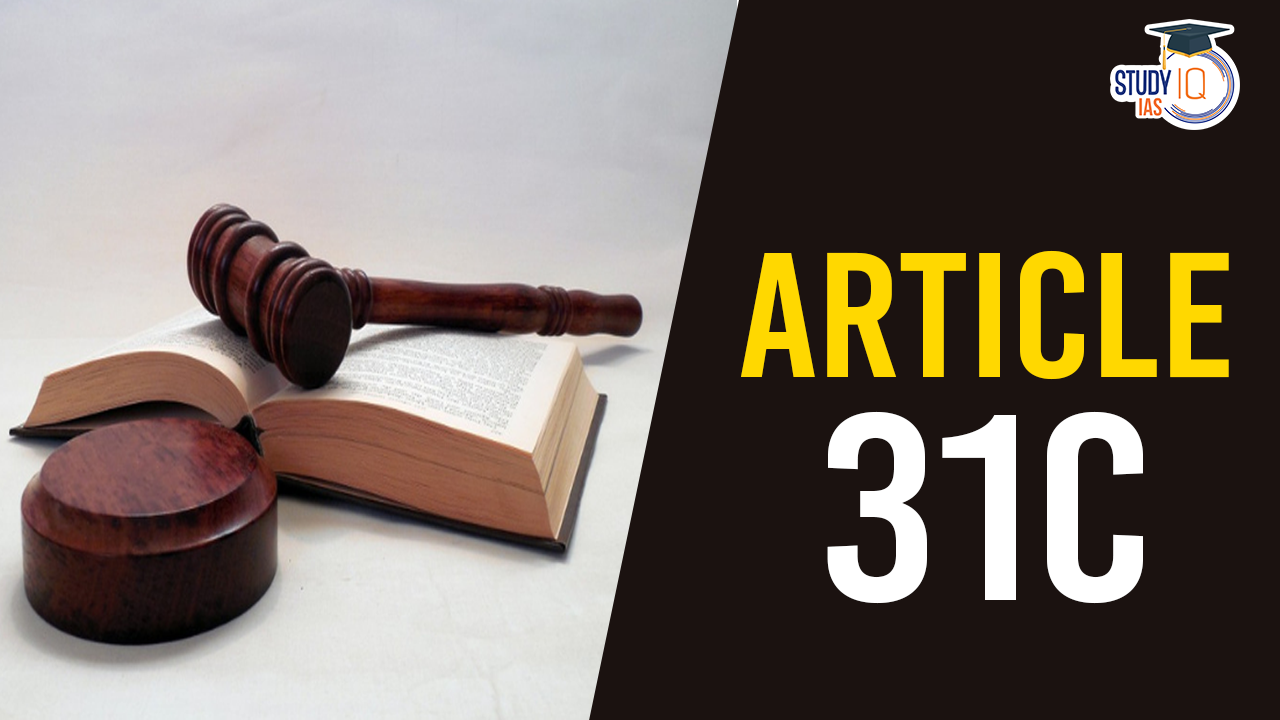Table of Contents
Context
During a case addressing whether the government has the authority to acquire and redistribute private property, a 9-judge panel of the Supreme Court chose to also examine a matter of significant constitutional impact: whether Article 31C remains in effect.
About 31(c) of the Indian Constitution: An Overview
Purpose and Protection under Article 31C
- Article 31C was introduced to protect laws aimed at distributing the community’s material resources equitably (as per Article 39(b)) and preventing the concentration of wealth and means of production to the detriment of the common good (as per Article 39(c)).
- It shields these laws from being challenged based on the right to equality (Article 14) or freedoms under Article 19, such as speech and peaceful assembly.
Origin of Article 31C
- Article 31C was established through the Constitution (25th) Amendment Act of 1971.
- This amendment was a direct response to the “Bank Nationalisation Case,” in which the Supreme Court prevented the government from taking over 14 commercial banks under the Banking Companies (Acquisition and Transfer of Undertakings) Act, 1969, due to inadequate compensation measures outlined in the Act.
- The primary goal of the 25th Amendment was to overcome the obstacles encountered in implementing the Directive Principles of State Policy, with the introduction of Article 31C being one of the strategies adopted to achieve this.
Constitutional Challenges and the Basic Structure Doctrine
- The 25th Amendment, including Article 31C, was challenged in the landmark Kesavananda Bharati case (1973).
- Here, a 7-6 majority of the 13-judge bench held that the Constitution contains a “basic structure” that cannot be altered by amendments.
- The Court in this verdict invalidated the portion of Article 31C that prevented laws enacted under it from being judicially reviewed for not adhering to the policies outlined in the directive principles.
- Expansion and Subsequent Limitation of Article 31C:
- The Constitution (42nd) Amendment Act of 1976 expanded Article 31C’s protection to all directive principles (Articles 36-51), attempting to prioritise them over the fundamental rights provided in Articles 14 and 19.
- However, this broader protection was struck down in the Minerva Mills v. Union of India case (1980), where the Supreme Court ruled that the amendment exceeded Parliament’s constitutional amendment powers by attempting to grant it “unlimited” and “absolute” powers.
Current Legal Status and Uncertainties
- Although part of the 42nd Amendment was invalidated, it led to questions about whether Article 31C as initially framed under the 25th Amendment still stood in its entirety, creating a legal ambiguity that persists.


 New Phase of Operation Chakra to Combat ...
New Phase of Operation Chakra to Combat ...
 Soyuz Aircraft: History, Design and Sign...
Soyuz Aircraft: History, Design and Sign...
 Topological Materials: The Future of Qua...
Topological Materials: The Future of Qua...





















